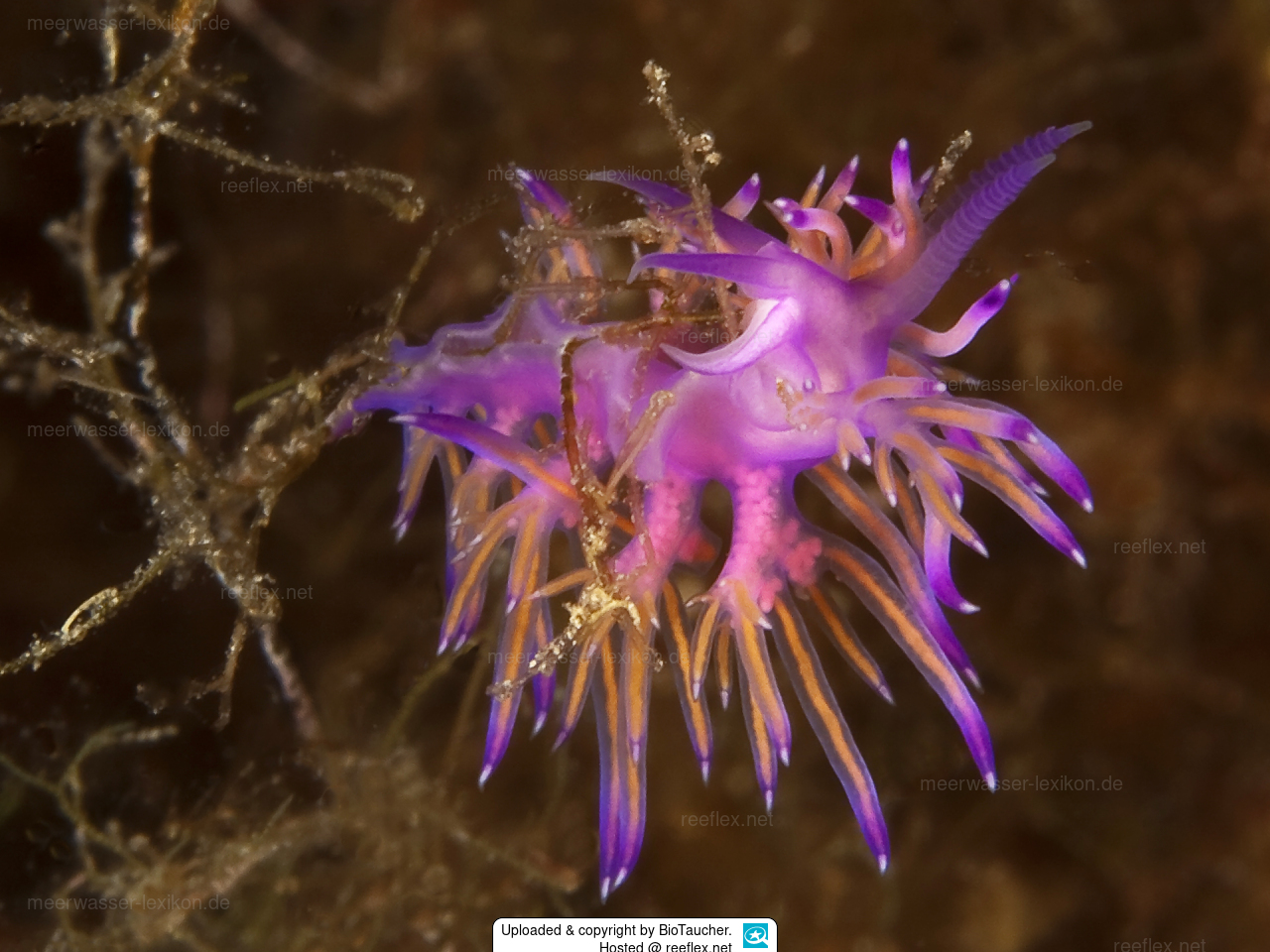Info
Flabellina affinis (Gmelin, 1791)
Flabellina affinis feeds on Eudendrium species (hydroids). They only ate the polyps. The F. affinis is a hermaphrodite and its reproduction occurs in the period from March to October. It has bundles of 6-6 each with 3-9 Cerata. This snail can be easily confused with F. pedata and F. ischitana. Only in F. affinis, the region directly under the white peaks of the opaque purple-colored Cerata. That's why the digestive system is not consistently visible to the tips .
In F. ischitana and F. pedata it isn't the case, there is no coloring outside the opaque, but occurs more or less colored by the digestive organs, which extend into the Cerata. Also, the rhinophores with F. affinis ribbed much stronger than in the other species.
Synonymised names:
Doris affinis Gmelin, 1791 (original combination)
Eolidia flabellina Vérany, 1846 (synonym)
Flabellina affinis feeds on Eudendrium species (hydroids). They only ate the polyps. The F. affinis is a hermaphrodite and its reproduction occurs in the period from March to October. It has bundles of 6-6 each with 3-9 Cerata. This snail can be easily confused with F. pedata and F. ischitana. Only in F. affinis, the region directly under the white peaks of the opaque purple-colored Cerata. That's why the digestive system is not consistently visible to the tips .
In F. ischitana and F. pedata it isn't the case, there is no coloring outside the opaque, but occurs more or less colored by the digestive organs, which extend into the Cerata. Also, the rhinophores with F. affinis ribbed much stronger than in the other species.
Synonymised names:
Doris affinis Gmelin, 1791 (original combination)
Eolidia flabellina Vérany, 1846 (synonym)







 BioTaucher
BioTaucher

























